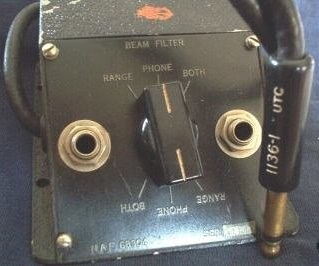Ever since I got access to a 1939 Hammarlund Super-PRO (SP-210 LX) receiver when I was 13,
I always loved bigger radios and add-on units w/all kinds of knobs to twiddle. A few years back
I jumped at the chance to buy one of N6VR's filter-laden FT-1000mp's. He was retiring the Yaesu radios from SO2-R operation and switching to a pair of (much smaller) Elecraft K3's. Ergonomically,
I way-prefer the FT-1000mp over the K3. I really appreciate the BiG main tuning knob w/shuttle jog. Having access to dual-receive in the FT-1000mp makes knob-twiddling infinitely more fun.
In addition to a series of reasonably sharp I-F filters, the Main RX sports a reasonably effective
e-DSP facility. Even tho the e-DSP is not I-F based (like its successor - the FT-1000mp MK-V),
minus agc-pumping, the 1000mp's eDSP allows shaping the audio in a number of different ways
to peak the audio passband in such a way that muddied-signals often "PoP" a few db ABOVE the
ramble-mud; and, of course the auto-notch facility is, shall we say, "top notch".
While I LoVe the FT-1000mp design overall, what is often overlooked is the fact that the e-DSP
facility works ONLY with the Main-RX (VFO-A). The Sub-RX is in reality, relatively wide-open.
Prior to bringing the MP into my WQ6X operation, the JPS NIR-12 DSP and the MFJ-752c analog filters had been shelved in the storeroom.
During the 5-contest weekend in May 2017 (where I took 3rd place for 7QP QSO party and 1st-place for the INQP GiG), amongst other experiments, I devised a cabling-trick allowing the NIR-12 and 752c to be cascaded in the Sub-RX audio line. Right after that weekend 2 BLOGs were posted describing what was done and how it turned out. [CLICK HERE] to read that picture-laden description.
In time for 2017's Cw All Asia contest, I brought a languishing Autek Research QF-1A off the dusty storeroom shelf, inserting it in the laptop audio line for running NX6T remotely. After I got the right-feel for the different filter configurations and settings w/the QF-1A, I was amazed at the peaking effects of the Peak & High-Pass filter settings of that vintage analog filter. [CLICK HERE] to read about that.
Because the All Asia GiG was a Cw contest, I got a "quick-learn" about all the things 25+ year-old analog technology can still bring us, in an overly-DSP'd society. As you can see, the QF-1A is equipped with Low-pass/High-pass filters, a pair of audio-notch controls and most important, an
audio peak filter (APF) that is as good as the inboard APF controls that came with the high-end transceivers released during the time-period the QF-1A was on the market.
The Autek filter design is of course an audio emulation of the classic I-F based Q-Multiplier circuitry; without the caveat of having to TAP the I-F signal line. Except during moments of extreme agc-keying (when a strong station is near the RX passband) the Autek QF-1A is as good as ANY Q-Multiplier.
Because the audio passband is processing is analog, the operator can "fine tune" the passband shape characteristics more precisely than most DSP methods allow us to do.
A filter you may not be aware of is the WW-II Navy "BEAM" filter (or FL-8), initially intended for on board aircraft receivers. Think of the "RANGE" switch position as a CW filter and the "PHONE" position as a medium-skirted SSB filter. As I recall, the "BOTH" position effectively bypasses the filter.
Technically, there is enough room
inside the box to mount a small IC-based filter/amplifier. I have seen a modified Beam filter with one of headphone jacks removed and replaced with a filter adjustment pot.
A major advantage of external filters is their plug-in and play operation; no circuit modifications
to the receiving equipment are necessary. The major disadvantage is that most external filters are usually relatively worthless in the presence of adjacent signals down-pumping the receiver's AGC. Nevertheless, while most analog audio-processing is vintage "old school", your ears don't
care about that.
Altho Digital Signal Processing is for the most part here to stay, you pay a premium price to purchase a DSP-laden radio. In most cases, external analog and digital external filters do a near-equivalent filtering job, and quite frequently for well under $100. Another advantage of external filters is that
with an audio cable switch box, they can be used with a multitude of transceiver and receiver units.
What approach do YOU take?
ANALOG? DSP? BOTH? OR?.....






No comments:
Post a Comment